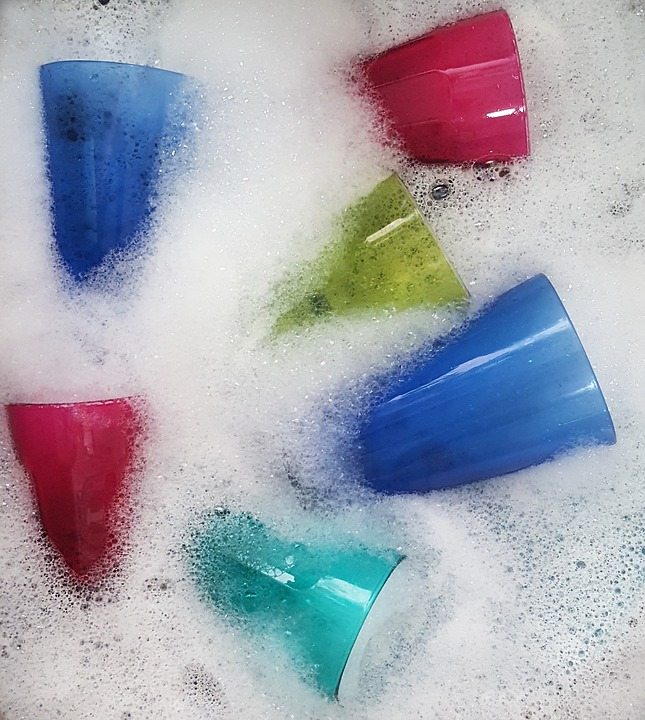|
|
|
There is clutter, and then there is clutter. Some clutter is deep rooted, emotionally charged, and physically intimidating. Taming it demands an investment of time and energy. Surface clutter, the clutter that piles up on a day to day basis, mostly the result of procrastination, can be significantly reduced by implementing a few simple clutter-busting behaviors. There are two simple steps involved in eliminating surface clutter.
Start by training yourself to notice things that are out of place. One way to do this is to routinely scan a room to identify items that have strayed from their proper home. As you practice scanning, make a mental note of the kinds of clutter that tend to pile up. This will give you a sense of where systems are needed. In particular, be on the lookout for common contributors of clutter – dishes, mail, clothing, etc. The next step is to begin turning clutter-building habits into clutter-busting behaviors. It’s easier than you might think. To help you get started, I’ve identified five common problem areas and suggestions for building clutter-busting behaviors. These simple habits can significantly reduce the daily buildup of clutter. Consistently do these five things, and I guarantee you’ll notice a difference in the amount of surface clutter in your home.
The bed is the focal point of the bedroom, and as such, it has the power to dictate the mood of the space. A rumpled, unmade bed is an invitation to be messy. Clothing, shoes, and other articles strewn lazily about look perfectly at home with an unmade bed. On the other hand, a neatly made bed communicates order and inspires tidiness. To toss things about sloppily in such a space creates a sense of discord and unease. In essence, the space feels at odds with itself.
A made bed communicates something to its owner as well. It says, “I care. I’m invested in my space and myself.” Simply making the bed starts each day off on the right foot. Before leaving the bedroom, you have accomplished something productive and set a positive tone for the day.
It’s tempting to toss dirty dishes in the sink and walk away, but like an unmade bed, a sink full of dirty dishes sends a message that order is not a priority. It also serves as a nagging irritant. Those dirty dishes are a constant reminder of a thing that requires your attention. The fact that you’re not dealing with it can lead to feelings of guilt. The more dishes that pile up, the less appealing the task becomes, and the more you’ll feel like procrastinating. The longer you procrastinate, the more dishes pile up and the more time consuming the task becomes.
Before you know it, a few dirty dishes can lead to a whole lot of [unnecessary] stress. But it doesn’t have to be that way. Try these tips for controlling dirty dishes – so they won’t control you.
Clothing, whether dirty or clean, can be a major culprit in contributing to clutter. The funny thing is, it only takes a few seconds to hang up or put away a single article of clothing, barely more time than it takes to dump it on the floor, the bed, the furniture, etc. If, however, it’s left to pile up over the course of days, the time required to put things where they belong increases significantly. The key is to set yourself and your family up for success.
This can be achieved by simplifying the process as much as possible. Here are some examples:
For many people, there is something truly intimidating about mail. Mail requires decision making, and we often encounter it at a point in the day when we’re tired of making decisions. So, we leave it to deal with later, and before long, it has become an overwhelming pile. On the other hand, if you’re only dealing with a single day’s mail, it only takes a few minutes (sometimes less) to complete the task.
The secret to preventing pile up is to develop (and utilize) a system for dealing with the mail. Designate a spot for opening the mail each day. Make sure there is a pair of scissors or letter opener nearby. It’s also useful to have a bin handy for recycling junk mail. As soon as the mail enters your house, sort it according to type: things to be recycled (put them directly into the bin), things to be shredded, things that require immediate attention (to do now), and things that require action but can wait (to do later). Have a place for each type of item, and immediately put items in their proper place. If you have time to deal with an item that requires action, do it.
This may seem like a no-brainer, but a lot of clutter collects from people walking in the door and dumping whatever they're carrying. The best way to prevent this is to have a place for things like purses, keys, coats, and shoes, and put them in their place as soon as you enter.
If you’ve made purchases, put them away. If you’re carrying the mail, deal with it. Most things can be put away in a matter of minutes (or less). Not putting things away leaves the home feeling cluttered and invites buildup over time which requires significantly more effort to be dealt with.
Try implementing these five suggestions for conquering surface clutter. I think you'll find that it helps a great deal with controlling the overall clutter in your home.
9 Comments
Clutter is a byproduct of choice. With every advance in technology our choices increase, and with those increasing choices comes an increase in clutter. There are several reasons why this is true. In some cases, advancing technology produces products we’ve never seen before but are sure we need to improve the quality of our lives. Sometimes, a newer, nicer version causes us to feel dissatisfied with our existing product, so we go out and buy a replacement. Instead of actually replacing the outdated item, though, we hold onto it because “it’s still good” or “it might be worth something”. Thus, clutter is born. People think the answer to their clutter problem is more space, but in reality, the answer is almost always less stuff. A surefire way to control clutter is to limit your choices. As a bonus, controlling clutter by limiting choices can actually lead to increased happiness. Studies show that the fewer choices we have, the more satisfied and content we feel. Lauren Migliore explains it this way in her article “I Can’t Decide! Why An Increase in Choices Decreases Our Happiness”:
If too many choices lead to unhappiness and too much stuff leads to clutter, then a simple approach to this problem is to place limits on how much stuff we keep. The key is to make mindful decisions based on naturally (or in some cases self) imposed constraints. Such constraints can be spatial in nature, or they can be numeric.
Spatial constraints result when you let the available space determine what you keep. For instance, if you’re a book lover, but you only have space for one bookcase in your apartment, then the number of books you keep should be limited to the capacity of your bookcase. Books that don’t fit on the bookcase become clutter, and as such, they lose their identity, becoming part of the landscape. If you are a crafter and you have a large closet available for storing craft supplies, then you must limit your craft supplies to what can be contained within that closet. Find ways to maximize the space and then minimize your supplies, keeping only those things you know you’ll actually use.
Young children are natural hoarders. They are unable to assign realistic value to things. In their eyes, the cheap plastic toy that came with their lunch is as valuable as the $50 building set they got for their last birthday. Value is directly linked to ownership. I own it, therefore it’s important to me. If left to their own devices, children’s rooms can quickly become overwhelmed with school papers, personal artwork, completed coloring books, birthday party favors, happy meal toys, bits of erasers and pencils, old greeting cards, etc. A great way to compromise with your kids while simultaneously containing their clutter is to assign them a keepsake box. You determine the size of the box. They determine what goes inside. When the box starts to get full, it’s time to reassess its contents. This is the responsibility of the child. It is the space, and not the parent, that is limiting what they can keep, so you don’t have to be the bad guy, always threatening to toss things out. In addition, the child learns several important skills to include decision making, evaluating the true value of things, and self-limiting (because no matter what popular culture implies, we can’t have it all).
When there are no inherent restraints, you must create your own. Learn to limit yourself by deciding in advance how many of something you will own (shoes, handbags, kitchen gadgets, tubes of lipstick, video games, coffee mugs, etc.). Just because you have four functional pizza cutters in your kitchen drawer, that doesn’t mean you need four pizza cutters. Pick your favorite and part with the rest. In order to remain within the numeric limits you set for yourself it will be necessary to purge regularly. When you find a black sweater you can't live without, go ahead and get it. Then sort through the six black sweaters already in your closet and choose one to part with. Enjoy the Liberating Affects of ConstraintsToo often we fret over things we don’t really want or need, or in some cases even like. We limit ourselves by remaining tied to things that don’t speak to our hearts or serve a valuable purpose in our lives. Instead of limiting yourself, I recommend limiting your stuff. Rather than worrying about what you spent, or who gave you something, or whether or not a thing still has value, try focusing on living comfortably within your space. I think you’ll find it tremendously liberating.
|
Archives
November 2022
Categories
All
|
Proudly powered by Weebly





 RSS Feed
RSS Feed